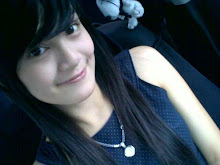The mark that the recording of Caravanserai and Love Devotion Surrender had left on Carlos Santana was monumental. The issue of Welcome, the band's fifth album and its first with the new lineup, was a very ambitious affair and was regarded by traditional fans of Santana with even more strangeness than its two predecessors. However, issued as it was at the end of 1973, after Miles had won a Grammy for Bitches Brew and after Weather Report, Return to Forever, and Seventh House had begun to win audiences from the restless pool of rock fans, Santana began to attract the attention of critics as well as jazz fans seeking something outside of the soul-jazz and free jazz realms for sustenance. The vibe that carried over from the previously mentioned two albums plus the addition of vocalist Leon Thomas to the fold added a bluesy, tougher edge to the sound showcased on Caravanserai. The band's hard root was comprised of Carlos, drummer Michael Shrieve, bassist Doug Rauch, and keyboard king Tom Coster. Add to this the percussion section of Armando Peraza and Chepito Areas as well as a second keyboard by Richard Kermode, and space was the place. The John Coltrane influence that inspired the Santana/John McLaughlin pairing on Love Devotion Surrender echoes here on "Going Home," the album's opening track, arranged by Coltrane's widow, pianist and harpist Alice. The deeper jazz fusion/Latin funk edge is articulated on the track "Samba de Sausalito," and to a much more accessible degree on "Love, Devotion & Surrender," which features Thomas growling through the choruses and also features Wendy Haas, a keyboardist on Love Devotion Surrender who is enlisted here as a second vocalist. In fact, her pairing with Thomas on Shrieve's "When I Look Into Your Eyes" is nothing less than beatific. McLaughlin makes a return appearance here on the stunningly beautiful guitar spiritual "Flame Sky." Brazilian song diva Flora Purim is featured on "Yours Is the Light," a gorgeous Afro-Brazilian workout that embraces Cuba son, samba, and soul-jazz. Welcome also marked the first appearance of French soprano saxophonist Jules Broussard on a Santana date. He would later collaborate with Carlos and Alice Coltrane on Illuminations. Ultimately, Welcome is a jazz record with rock elements, not a rock record that flirted with jazz and Latin musical forms. It is understandable why Santana punters would continue to be disenchanted, however. Welcome was merely ahead of its time as a musical journey and is one of the more enduring recordings the band ever made. This is a record that pushes the envelope even today and is one of the most inspired recordings in the voluminous Santana oeuvre.AMG.
listen hereSaturday, May 14, 2011
Popular Posts
-
When you think of the Doors , "guitar" isn't the first thing that usually comes to mind ( Jim Morrison 's manic persona an...
-
The only album by the Steve Baron Quartet was a fitfully interesting but uneven effort, jumping between Baroque folk-rock, moody early si...
-
David Lannan was a street singer from San Francisco, CA. 1970's Street Singer was recorded live outside The F.B.I. Stock Exchange City H...
-
Kathy McCord - Kathy McCord 1970 Kathy McCord released a lone self-titled LP in 1970, the first release from Creed Taylor ’s CTI Records, ...
-
Ahmed Abdul-Malik was one of the first musicians to integrate non-Western musical elements into jazz. In addition to being a hard bop bas...
-
Although it was a disappointing seller and signaled the start of Donovan 's commercial decline, Open Road could have been a new beginn...
-
A wild, freewheeling, and ultimately successful attempt to merge psychedelia with jazz-rock, Soft Machine 's debut ranges between loving...
-
The Small Faces were the best English band never to hit it big in America. On this side of the Atlantic, all anybody remembers them for i...
-
Redbone was a Los Angeles-based group led by Native American Pat and Lolly Vegas . They hit paydirt in 1974 with the million-seller "...
-
Kingfish is a San Francisco-influenced band which originally featured the Grateful Dead's Bob Weir , singer/harpist Matthew Kelly , bas...












0 comments:
Post a Comment